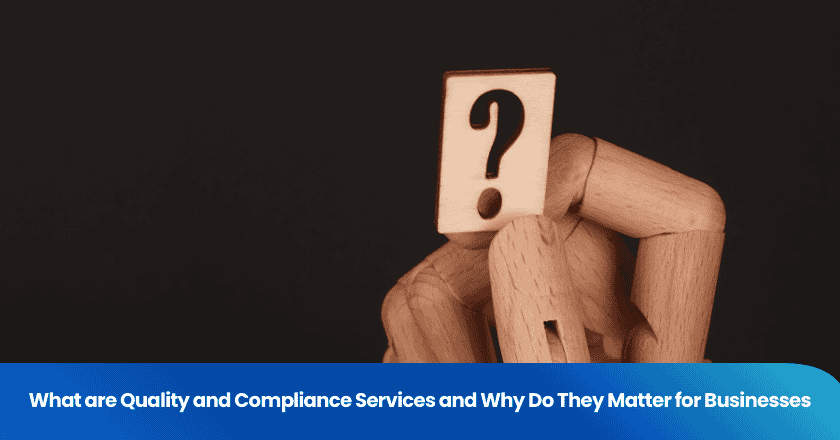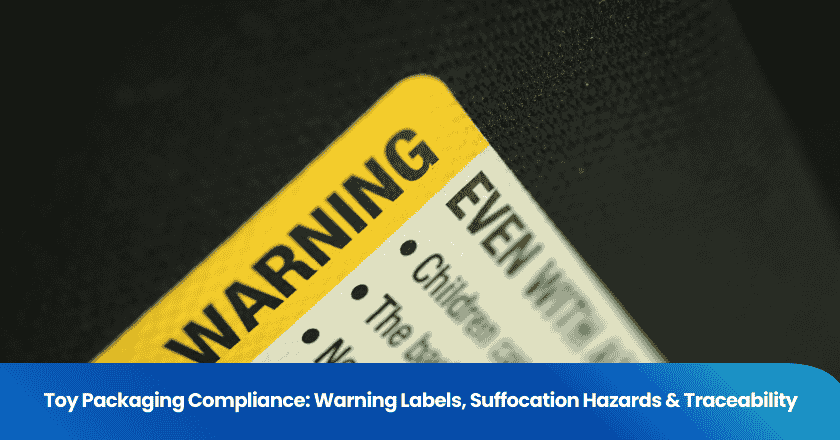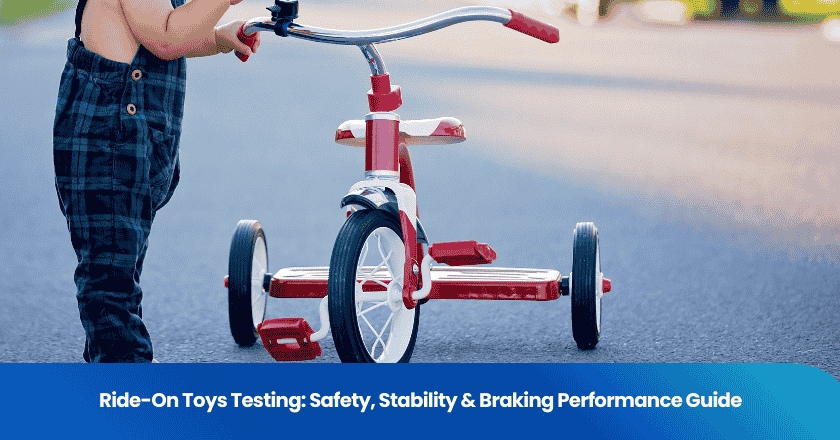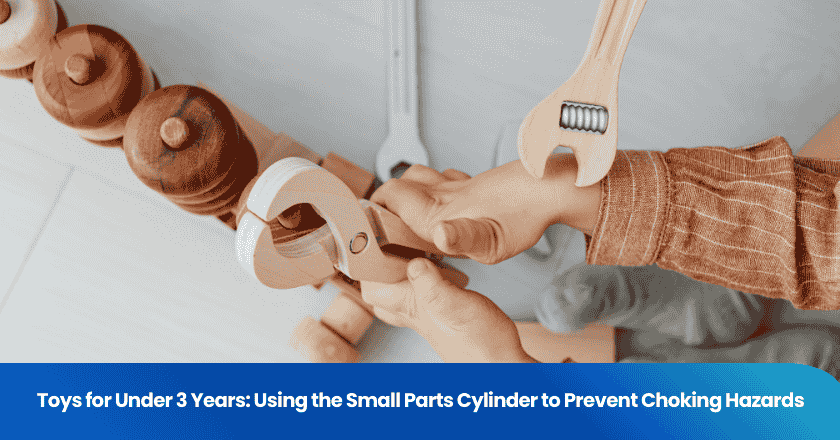
Quality and compliance services help you meet strict industry standards and regulations. These services ensure your business delivers consistent quality while protecting customers and the environment. You can see the impact in several areas:
| Evidence Type | Description |
|---|---|
| Environmental Compliance | Systematic approaches to managing environmental impacts lead to cost savings through waste reduction and energy efficiency improvements. |
| Health and Safety Compliance | Data-driven approaches reduce workplace incidents while maintaining productivity levels. |
| Product Safety Compliance | A comprehensive approach integrates design controls and risk management, reducing liability risks. |
- Testing and quality control enhance customer loyalty and brand reputation.
- High standards in testing lead to reduced liability risks and improved safety for customers.
Quality and compliance services matter because they build trust, reduce risk, and support long-term sustainability.
Key Takeaways
- Quality and compliance services help businesses meet industry standards, ensuring consistent quality and protecting customers.
- Implementing a strong quality management system leads to improved customer satisfaction and reduced liability risks.
- Proactive issue resolution strategies, like rigorous testing and supplier audits, prevent major problems and enhance product safety.
- Investing in quality and compliance builds trust with customers, enhancing your business reputation and driving long-term growth.
- Regular audits and continuous training are essential for maintaining compliance and adapting to changing regulations.
Quality and Compliance Services in Business
Quality Assurance Basics
You play a critical role in shaping the quality of your products and services. Quality assurance focuses on internal processes that prevent defects before they reach your customers. You establish clear procedures, monitor performance, and implement corrective actions. These assurance activities help you maintain high quality standards and meet requirements set by international frameworks such as ISO 9001. By building a robust Quality Management System, you ensure consistent quality and improve customer satisfaction. You conduct regular management reviews, allocate resources strategically, and prioritize continuous improvement. This approach allows you to adapt to market changes and maintain operational efficiency.
Continuous improvement forms the backbone of quality assurance. You assess your processes regularly and introduce enhancements that drive excellence. This commitment to improvement supports your business in meeting evolving standards and customer expectations.
Quality Compliance Overview
Quality compliance ensures that your business meets external standards and regulations. You align your operations with industry-specific requirements and demonstrate adherence to established quality criteria. Unlike assurance, which focuses on internal processes, quality compliance addresses external expectations. You follow frameworks such as ISO 26262 for automotive safety, IEC 62304 for medical device software, and IEC 61508 for electronic safety systems. These compliance solutions guide you in managing hazards, ensuring safety, and maintaining integrity throughout the product lifecycle.
| Compliance Framework | Description |
|---|---|
| ISO 26262 | Manages hazards in automotive development, supporting safety throughout the lifecycle. |
| IEC 62304 | Guides medical device software development, ensuring safety requirements are met. |
| IEC 61508 | Establishes best practices for electronic safety systems across industries. |
| EN 50128 & EN 50657 | Define safety integrity for railway software in critical functions. |
You implement compliance solutions to meet regulatory requirements and quality standards. These solutions help you avoid penalties, reduce liability risks, and build trust with stakeholders. You document your processes, train your staff, and monitor compliance regularly. This proactive approach supports operational excellence and continuous improvement.
Regulatory Compliance Role
Regulatory compliance requires you to follow laws set by regulatory bodies. You ensure your business meets legal requirements across all stages, from product development to marketing. Regulatory compliance solutions protect your business from legal risks and support public safety. In healthcare, you adhere to regulations that improve patient care and safeguard protected health information. In food production, you follow food safety regulations that prevent foodborne illnesses and protect public health.
Food safety regulations are vital for protecting public health by preventing foodborne illnesses. Each year, roughly 48 million Americans suffer from foodborne illnesses, with 3,000 fatalities. These regulations ensure the safe production, handling, and distribution of food.
You implement compliance solutions to meet regulatory requirements and maintain security. You monitor changes in regulations, update your policies, and train your staff. This commitment to regulatory compliance supports your business in regulated industries and enhances public safety.
- You benefit from compliance solutions that address quality assurance, quality compliance, and regulatory requirements.
- You reduce risks, improve security, and maintain high quality standards.
- You support your business in meeting regulations and building a reputation for excellence.
Quality and Compliance Management
Key Components
You need a strong foundation for quality and compliance management. This foundation includes several essential components that work together to support your business goals. The table below outlines these components and their roles in a modern quality management system:
| Component | Description |
|---|---|
| Board and Management Oversight | Sets risk tolerance, approves policies, and ensures resources for compliance activities. |
| Building a Strong Compliance Program | Provides written policies, procedures, and employee training for daily operations. |
| Managing Consumer Complaints | Tracks and analyzes complaints to find and resolve systemic issues. |
| Conducting Thorough Compliance Audits | Uses regular audits to verify compliance and align with regulations. |
| Technology Integration | Applies technology for real-time monitoring and data analytics. |
| Documentation and Reporting | Keeps records and shares reports with stakeholders. |
A modern quality management system brings these elements together. You gain better quality and compliance management by integrating oversight, technology, and clear documentation.
Implementation Steps
You can build an effective quality and compliance management program by following a clear process. Here are the recommended steps:
1. Define quality objectives and scope.
2. Choose the right quality management system framework and standards.
3. Develop documentation and policies for your quality management system.
4. Train employees and create a culture focused on quality.
5. Implement processes and workflows for quality and compliance management.
6. Integrate digital tools and software for a modern quality management system.
7. Conduct internal audits and drive continuous improvement.
Tip: Regular audits and ongoing training help you maintain better quality and compliance management over time.
Service Providers
You may need external support for quality and compliance management, especially as your business grows. Service providers offer specialized solutions for manufacturing and other industries. These providers help you implement a modern quality management system, manage audits, and improve your compliance processes. You can also use industry benchmarks to compare your performance with competitors. Benchmarks show how often you should audit, how much to invest in compliance, and how engaged your employees are with compliance initiatives. This approach helps you achieve better quality and compliance management and stay ahead in your industry.
Benefits for Businesses
Risk Reduction
You face risks every day in your business. Quality and compliance services help you minimize these risks by creating strong systems and processes. You can prevent costly mistakes and avoid legal penalties by integrating compliance and risk management into your operations. Companies with robust compliance programs experience fewer financial losses from operational incidents. Regular program assessments lead to better risk management outcomes. You can see the impact in regulated industries, where the average cost of regulatory fines reached $34.4 million per incident in 2022.
| Evidence | Description |
|---|---|
| 73% | Organizations integrate compliance and risk management functions to improve efficiency and effectiveness. |
| 23% | Companies with robust compliance programs experience fewer financial losses from operational incidents. |
| 49% | Increase in the average cost of regulatory fines in 2022, reaching $34.4 million per incident. |
| 40% | Companies conducting regular program assessments achieve better risk management outcomes than those with irregular reviews. |
You can minimize various risks and identify compliance gaps before violations occur. Effective compliance and risk management protect your business from reputational damage and legal penalties. Organizations with high accountability experience less fraud and misconduct. Risk reduction strategies vary across sectors such as life sciences, manufacturing, and aerospace. Each sector uses risk-based quality systems tailored to specific regulatory requirements and resiliency targets. You need to understand the difference between risk mitigation, which prevents risk events, and risk reduction, which minimizes the impact of risks that do occur. For example, updating legacy software in a drug firm can mitigate risks, while having a disaster recovery plan can reduce the impact of an IT outage.
Improved Visibility
You gain better visibility into your operations when you implement quality and compliance services. A modern quality management system provides insights for identifying trends and anticipating problems. You can make data-driven decisions and enhance strategic planning. Streamlined processes lead to shorter handle times and better resource allocation. Centralized records improve information flow and reduce delays among stakeholders.
| Benefit | Description |
|---|---|
| Data-Driven Decision Making | QMS provides insights for identifying trends and anticipating problems, enhancing strategic planning. |
| Improved Operational Efficiency | Streamlined processes lead to shorter handle times and better resource allocation. |
| Enhanced Internal Communications | Centralized records improve information flow and reduce delays among stakeholders. |
You improve compliance readiness for audits and make better decisions through end-to-end visibility. Enhanced supplier performance and accountability become possible. Significant cost savings result from enhanced visibility. AI-powered forecasting improves inventory management. Streamlined warehouse operations contribute to better product availability. You can identify inefficiencies and eliminate redundancies. Real-time inventory tracking optimizes stock levels and reduces carrying costs. AI-driven solutions have reduced out-of-stock scenarios by 25% and lead times by 20%. Improved data management consolidates and co-locates data from various sources, enhancing auditing and document collection. More powerful visibility centralizes information, creating a single source of truth and improving decision-making. Increased productivity comes from automating information management, allowing teams to focus on exceptions and manage compliance efficiently. Streamlined corrective actions management replaces outdated methods, facilitating quicker and thorough management of corrective actions.
Proactive Issue Resolution
You can resolve issues before they become major problems by adopting proactive strategies in your quality and compliance programs. Establishing a product safety team allows you to review safety concerns and develop preventive strategies. Monitoring supplier quality ensures compliance with standards and prevents supply chain issues. Rigorous testing protocols at every stage of product development help you catch defects early. Strict quality control measures identify and address defects before products reach customers. Batch tracking systems enable you to quickly identify affected products and limit recall scope.
- Form a product safety team to proactively address potential safety concerns.
- Audit supplier quality to catch issues before they escalate.
- Rigorously test products at every development stage.
- Enforce strict quality control standards to prevent defects.
- Use batch tracking systems to isolate affected products quickly.
Selecting suppliers based solely on price without evaluating their quality standards and compliance can increase vulnerability to recalls. Investing in reliable suppliers who prioritize quality and safety is crucial for mitigating risks. You track and report proactive issue resolution by monitoring compliance activities, analyzing data, comparing KPIs, communicating findings, undertaking corrective and preventive actions, documenting actions, and reviewing and updating compliance plans.
1. Monitor compliance activities to ensure alignment with regulatory requirements.
2. Analyze data to identify patterns indicating recurring issues.
3. Compare KPIs to measure the percentage of compliance incidents resolved within a specified timeframe.
4. Communicate findings with stakeholders to maintain transparency.
5. Undertake corrective and preventive actions to address immediate issues and prevent recurrence.
6. Document all actions taken to show commitment to compliance.
7. Review and update compliance plans regularly to reflect changes in regulations and business operations.
Enhanced Reputation
You build a stronger reputation when you prioritize quality and compliance. Customers trust businesses that demonstrate commitment to high standards and continuous improvement efforts. Compliance certifications act as a badge of trust, enhancing business credibility and attracting customers. In sectors like health and childcare, businesses lacking certifications struggle to build customer relationships. Seventy-one percent of customers say they are more likely to buy from a company that is certified or verified for compliance.
- Compliance certifications act as a badge of trust, enhancing business credibility and attracting customers.
- In sectors like health and childcare, businesses lacking certifications struggle to build customer relationships.
- Seventy-one percent of customers say they are more likely to buy from a company that is certified or verified for compliance.
Case studies show that businesses regain customer trust and improve reputation after adopting quality and compliance services. A biotechnology company enhanced its Quality Management System to regain customer trust after regulatory scrutiny due to product quality inconsistencies. A mid-sized ecommerce organization improved its reputation by overhauling its ISO 9001 Quality Management System to address supplier quality and customer service issues. An automotive retailer boosted customer satisfaction and loyalty through a comprehensive quality management overhaul after experiencing declines in customer satisfaction scores. A metals manufacturer addressed product quality inconsistencies to maintain customer trust and market share in a high-demand environment. A construction firm improved its quality control system to reduce defect rates and customer complaints, safeguarding its reputation.
You strengthen your business reputation and build lasting customer relationships by investing in quality and compliance services. This commitment supports long-term growth and market leadership.
Regulatory Compliance Challenges
Common Barriers
You face several barriers when trying to meet regulatory requirements. Rapid changes in technology create digital transformation challenges, especially in sectors like finance. You must adapt quickly to new systems and processes. High costs for compliance have increased by over 60% for banks in recent years. Smaller firms often struggle because hiring compliance professionals requires significant resources. You need to provide continuous staff training to keep up with evolving regulatory standards. Without proper training, your business risks violations and operational inefficiencies. Stricter regulations demand more human and financial resources, making it difficult for smaller organizations to reallocate capital or hire the right personnel. Startups often lack dedicated compliance teams, which can lead to data breaches and loss of client trust. Understanding complex external regulations and scaling compliance as your business grows also present ongoing challenges.
- Digital transformation challenges due to rapid technological advancements
- High costs associated with compliance
- Need for hiring compliance professionals
- Continuous staff training requirements
- Stricter regulations requiring more resources
Cost and Resources
You must allocate significant resources to maintain regulatory compliance. In the pharmaceutical industry, you face high compliance costs because of strict regulatory oversight and the need for comprehensive quality assurance systems. You need detailed documentation and regular audit processes to meet industry standards. In contrast, technology companies may experience different regulatory burdens, but the need for data privacy management and cybersecurity compliance remains high. Regulatory changes can impact your cost structure, especially in multinational organizations. For example, employee hours dedicated to compliance increased by 61% from 2016 to 2023, and IT budget allocations for compliance rose from 9.6% to 13.4%. Smaller businesses may struggle to balance automation, personnel, and processes as regulatory demands grow.
| Year | Employee Hours Dedicated to Compliance | IT Budget Allocation for Compliance | Direct and Indirect Cost of Compliance as % of Revenue |
|---|---|---|---|
| 2016 | 100% (baseline) | 9.6% | 19% (average) |
| 2023 | 161% (increase of 61%) | 13.4% | 19% (average) |
Ongoing Management
You need a structured approach for ongoing regulatory compliance management. Large organizations require resources such as assessments, policy development, implementation of controls, training, and continuous monitoring. You must conduct gap analysis, internal audits, and risk assessments to evaluate compliance levels. Developing or revising policies ensures alignment with regulatory requirements. Implementing technical, operational, and administrative controls helps you maintain compliance. Ongoing employee training and awareness programs are essential for data privacy management and cybersecurity compliance. You should monitor compliance metrics and perform regular audit processes to ensure effectiveness. Best practices include regulatory mapping, personnel management, process streamlining, and continuous monitoring. Digital solutions, such as RegTech platforms and AI-powered tools, automate compliance tasks and improve data privacy management. You can measure the effectiveness of your compliance program by tracking employee reporting rates, conducting surveys, and monitoring outcomes. Creating a compliance-first culture and engaging transparently with regulators help you stay ahead of regulatory changes and external regulations.
Quality and compliance services play a vital role in your business success. You gain risk reduction, improved operations, and long-term sustainability by investing in these areas. Data analysis helps you track customer satisfaction, error rates, process efficiency, employee productivity, and compliance rates.
| Statistic | Source |
|---|---|
| 71% of C-suite leaders see ESG as a competitive advantage | Thomson Reuters |
| 75% of executives believe sustainability drives better business results | IBM |
| 55% of CEOs expect significant returns from sustainability by 2030 | KPMG |
Proactively managing quality and compliance positions your business for growth and resilience in a changing market.
FAQ
What is the difference between quality assurance and quality compliance?
Quality assurance focuses on preventing defects in your processes. Quality compliance ensures you meet external standards and regulations. Both work together to help you deliver safe, reliable products and services.
Why do businesses need regulatory compliance services?
You need regulatory compliance services to avoid legal penalties and protect your reputation. These services help you follow laws and industry rules, which supports public safety and builds trust with customers.
How can quality and compliance services improve business performance?
You gain better efficiency, fewer errors, and stronger customer loyalty. Quality and compliance services help you identify problems early, streamline operations, and maintain high standards across your business.
What industries benefit most from quality and compliance services?
Industries such as healthcare, manufacturing, food production, and finance rely heavily on these services. You must meet strict regulations and quality standards to ensure safety and maintain market access.
How do you start implementing a quality management system?
Begin by setting clear quality goals. Choose a suitable framework, develop policies, train your team, and use digital tools for monitoring. Regular audits and continuous improvement keep your system effective.
Grow your business with TradeAider Service
Click the button below to directly enter the TradeAider Service System. The simple steps from booking and payment to receiving reports are easy to operate.




